If there’s one thing we hear time and time again, it’s this: “I thought The Salvation Army was just kettles and thrift stores!”…Which is generally followed by: “I wish more people knew about all The Salvation Army does.”
So, allow us to provide as complete an overview as possible on the extensive work of The Salvation Army and its six key pillars of service.
First, let’s zoom out a bit.
The Salvation Army is a faith-based organization that began in London in 1865. Its founder, a Methodist minister named William Booth, walked the streets preaching to the homeless, the hungry and the destitute. Booth’s efforts became The Salvation Army, which set out to offer compassionate, tangible service to people in need following a quasi-military structure with William Booth as its first General. As The Salvation Army spread, it became known as one of the largest providers of humanitarian aid. You may have even heard of its early motto: Soup, Soap and Salvation.
Today, that service extends to more than 130 countries around the world and to every zip code here in the U.S. as The Salvation Army works to meet human need in every community—exactly as that community needs.
In some ways, that’s exactly what makes a complete understanding of all The Salvation Army does so difficult. But it’s also what I think is beautiful about the Army—it fills the need, whatever it is, for whoever needs it. The Salvation Army’s mission statement is this: To meet human need in Christ’s name without discrimination—that’s regardless of gender, race, sexual orientation, physical disability, age, creed or religion.
And it happens in partnership with people just like you—the Do Gooders of the world, who offer generous support in gifts, time and more to join in the fight for good.
With that support, The Salvation Army serves more than 23 million Americans in need each year. That’s almost one person every second, every day.
Ok, so now—let’s get to those kettles.
Kicking off each year at the Dallas Cowboys Thanksgiving Day game, and running through Christmas Eve, you’ll see red kettles and bell ringers standing outside supermarkets and shopping malls, encouraging you to drop in a few dollars—or more—to support The Salvation Army.
Some 25,000 bell ringers a year to help The Salvation Army raise money for local programs. That’s right—money given in your community stays in your community to help your neighbors.
And The Salvation Army is a responsible steward of generosity in every community.
As a national average, 82 cents of every dollar The Salvation Army spends go directly to support community service programs—far exceeding the Better Business Bureau’s guideline of 65 percent, so the money goes to those in need, not to management.
In 2018, The Salvation Army raised nearly $138 million in the Red Kettle Campaign, thanks to generous donors at the kettles and a long list of corporate supporters across the country—including Walmart Stores, Kroger Company, JCPenney, Walgreens, UPS, Albertsons and many more.
This year, that money is helping The Salvation Army provide more than 10 million nights of shelter and 56 million meals, along with addictions recovery programs, after-school programs and emergency shelters for families in need.
That work is conducted by The Salvation Army’s more than 63,000 employees, some 3 million volunteers across the U.S. and roughly 3,500 officers, who—under the military structure, have completed a two-year training program and become ordained ministers of The Salvation Army.
So with 23 million Americans served each year, what does this assistance look like? We’re breaking down the work of The Salvation Army into six pillars of service:
Pillar #1: The Salvation Army is there for those with nowhere to go.
Know this: As long as The Salvation Army stands, there’s no such thing as “No place to go.”
The Salvation Army has group homes, emergency shelters and transitional living centers that provide housing to displaced individuals and families for varying amounts of time. But it’s not just a bed; The Salvation Army seeks to serve the whole person and so every shelter service is supplemented with emotional and spiritual support. This includes counseling and educational and vocational services to help lead people back to self-sufficiency and independence.
Across the U.S., The Salvation Army provides a safe place to sleep for nearly 30,000 people every night.
And shelter is an area of critical need in our country. We know from the U.S. Department of Housing and Urban Development, or HUD, that roughly 553,000 people experienced homelessness on a single night in 2018.
In Southern California, The Los Angeles Times reported a 16 percent increase over last year in the number of people living on the streets, in vehicles and shelters. In fact, according to HUD’s numbers, of the top 10 states with the highest unsheltered homeless population in 2018, six are in the West: California, Washington, Oregon, Colorado, Nevada and Arizona. And Hawaii comes in at number 11.
For that reason, The Salvation Army in the West is taking on the issue of homelessness in a whole new way (listen to episode six of the Do Gooders Podcast with Territorial Commander Commissioner Kenneth G. Hodder sharing about The Way Out initiative).
The Salvation Army’s work for those experiencing homelessness also includes an extensive array of services for veterans, who collectively represent 26 percent of the U.S. homeless population.
And The Salvation Army’s work also includes addressing the needs of those who live below the poverty line—who are just one small crisis away from homelessness.
In Orange County, California, this looks like an undisclosed home where survivors of human trafficking can find safety. And many times it’s law enforcement who connects them to The Salvation Army’s home there.
In Boise, Idaho, this looks like a residential school for pregnant and parenting teens.
In Santa Cruz, California, this looks like opening an outdoor shelter encampment for those who are more comfortable sleeping in a tent, but still need nursing care, referrals to other services and a safe place to stay. (You can hear all about that in the Do Gooders Podcast, episode four.)
In Seattle, this looks like street outreach to people living in their vehicles.
In Missoula, Montana, this looks like a cold weather shelter to get people out of the elements.
In El Cajon, California, this even looks like providing a bus ticket back home. That happened for Marissa, who was homeless alongside her own mother, and together, they were using drugs. After her mom went to jail, Marissa connected with the local Salvation Army. Rather than placing her in a supportive housing unit, with her permission, The Salvation Army contacted her father in Iowa. When he found out she was living on the streets, he was eager to welcome her back home. And The Salvation Army provided Marissa a bus ticket to get there. Several months later, when The Salvation Army called to check in, Marissa’s father reported that she was doing well, back on her medication, and enrolled in mental health counseling.
In addition to shelter, The Salvation Army also aims to help struggling families avoid falling into the cycle of crisis by supplementing their income with utility, rent and other vital payments. Often, this assistance becomes the difference between maintaining a place to live—or not.
Across the country, The Salvation Army also equips people with educational resources, career coaching and job placement opportunities—knowing that by helping someone achieve stable and gainful employment, we help reduce the need for bill-pay, food and shelter assistance.
Pillar #2: The Salvation Army is there for those who are hungry.
Did you know every night in the U.S., 17.4 million families go to bed hungry?
One in 5 children under the age of 18 experiences prolonged hunger.
And millions of Americans don’t know where their next meal will come from.
The Salvation Army provides an average of 156,000 meals every single day across the country—feeding anyone in need. These nutritious meals are given through food pantries, which offer free fresh produce and canned goods; meal programs that range from sit-down, hot meals and valuable human interaction; to mobile meals that deliver much-needed sustenance to those who are homebound, to community gardens where those involved cultivate and care for the renewable source of produce at no cost.
Where there is hunger, you’ll find The Salvation Army feeding people and meeting needs.
In locations from Pasadena or Hemet, California, to Kauluwela, Hawaii, or Petersburg, Alaska, this looks like The Salvation Army packing backpacks of food and discreetly sending them home with kids after school on Friday so they won’t go hungry over the weekend. (We cover that in depth in the Do Gooders Podcast, episode 17.)
In Victorville, California, this looks like a grocery delivery program for low-income seniors in partnership with social workers from the Department of Aging and Adult Services. They currently serve more than 150 seniors a month.
And in places from Hobbs, New Mexico, to Cheyenne, Wyoming, this looks like a client choice food pantry, which allows those in need to select their own canned goods, fresh produce and frozen food items—just as you would in a grocery store.
Pillar #3: The Salvation Army is there when disaster strikes.
Disasters of incredible magnitude call for people of incredible generosity. And so The Salvation Army combats natural disasters with acts of God.
Drought, wildfires, flash-flooding, hurricanes, tornadoes, earthquakes and blizzards are the greatest threats to our country. And while every natural disaster is unique and creates its own special needs, the core of The Salvation Army’s disaster response consists of several basic services to meet the immediate needs of a survivor and the emergency responders there to help.
When a disaster strikes, The Salvation Army emergency response is activated and coordinates with federal, state and local governments. The Salvation Army arrives on scene as needed with food and hydration services, shelter, cleanup and emergency communication assistance to put victims in touch with loved ones. Depending on the need, The Salvation Army will often coordinate with government entities to develop and execute long-term strategic disaster recovery plans, including restoration and rebuilding initiatives, social services to address things like medical expenses or funeral costs, or the donation of physical goods to victims.
Throughout it all, The Salvation Army provides spiritual comfort and emotional support upon request to victims and emergency responders coping with the stress of a catastrophe. Many times, those in Salvation Army uniform are asked for prayer in the midst of a tragedy—and it’s a “ministry of presence” The Salvation Army considers one of its highest honors.
In Chico, California, this looks like 13 employees who lost their homes in the 2018 Camp Fire all returning to work at the Adult Rehabilitation Program to keep the program going.
In that fire, one of the deadliest and most destructive in state history, The Salvation Army set up at sites throughout the county in Chico, Oroville and more to serve thousands of meals and offer care to fire survivors. Celebrity chef Guy Fieri even joined in and shared all about it in the Do Gooders Podcast, episode seven.
Whatever the circumstance, The Salvation Army brings immediate help, continued hope and long-term healing to disaster survivors.
Pillar #4: The Salvation Army is there for children.
The Salvation Army operates more than 400 after-school programs in neighborhoods across the country. These programs offer a safe place to play and learn in a supervised and constructive environment.
In many cases, The Salvation Army provides sports, arts and music programs that are not available in the local school system. From choirs, to instrumental training, poetry to painting, drama to dance, after-school lessons and activities help introduce kids to the beauties of the fine arts.
In Casa Grande, Arizona, this looks like opportunities to participate in musical productions—everything from “Godspell” to “A Christmas Carol,” “Peter Pan,” or “The Nutcracker,” which we detail in the Do Gooders Podcast, episode 23.
In San Rafael, California, this looks like two 12-week terms each year of affordable instrumental and dance instruction, plus dinner for families who otherwise would not have access to arts training.
In Los Angeles, it looks like a soccer clinic with David Beckham on a newly installed turf field.
And in Alaska, this even looks like an annual expedition of The Salvation Army and the Alaska Air National Guard to visit isolated communities across the Last Frontier along with Santa and Mrs. Clause to distribute backpacks of school supplies and other gifts.
Meanwhile, The Salvation Army has an extensive network of camps that are devoted to developing and encouraging children.
Each summer, thousands of kids attend one of the 44 The Salvation Army camps across the U.S. In 2018, more than 260,000 kids attended a summer or day camp with The Salvation Army.
And it’s more than silly camp songs. For one 8-year-old girl in Eatonville, Washington, it meant a whole new perspective. After the first chapel at that week’s camp in which the director told the kids that God loves them and thinks they are beautiful, the young girl—who had a disfigured face—approached the director.
“God doesn’t love me,” she said. “I’m ugly. Even my family says I’m ugly.”
He responded: Well God says he loves you and God never lies. God does think you’re beautiful. And so do I.
The week went on and during the final chapel, the kids had the chance to come up to the front and talk to God about becoming part of his family. The little girl was one of many kids who spent time talking to God and receiving Jesus in his or her heart. In closing, the director asked the campers to tell someone about what they did.
One of the last kids out of the chapel was this girl.
She approached the director and said: “You know what? God loves me. You know what else? God thinks I’m beautiful.”
And with a high-five, she ran off—with a whole new, elevated outlook.
Pillar #5: The Salvation Army is there for seniors.
The Salvation Army knows kids aren’t the only ones who like to have fun. The Salvation Army believes no one should ever grow old alone. Studies even show that consistent human contact and interaction can reduce depression and dementia, which we know effects one in seven people over the age of 71.
The Salvation Army showers senior citizens with love and serves them with respect. Through community meals, joyful activities, visiting those who are homebound and more, The Salvation Army embraces seniors.
In addition, The Salvation Army offers adult day care programs for those who are unable to take care of themselves and operates 237 senior citizen centers, called Silvercrests, providing not only a place to live, but also an atmosphere of love, acceptance and encouragement.
In Olympia, Washington, this looks like a senior vacation Bible school—just like the kind you find in communities everywhere each summer for kids, but for those 55 and older. This year, 75 people attended the senior VBS for daily crafts, games, singing, lunch and a Bible study on heaven.
In Phoenix, this looks like the reuniting of sisters over lunch after 15 years of separation through the Senior Activity Center. Since 1982, the center has offered services for personal growth and health plus social fellowship to seniors—all free and available to anyone. There you’ll find exercise and arts and craft classes. And the center delivers meals to homebound seniors and coordinates a senior transportation outreach to assist individuals with rides to medical appointments or to get groceries.
Pillar #6: The Salvation Army combats addiction.
This brings us to The Salvation Army’s family thrift stores.
When you donate goods to The Salvation Army—clothing, furniture, appliances and even cars—those items are then sold at the Family Stores.
The Family Stores are directly connected to The Salvation Army’s Adult Rehabilitation Centers. Through these cost-free, biblically based programs, The Salvation Army provides housing, food, counseling, community and employment while working to treat the symptoms and ultimately the root causes of prolonged addiction.
Did you know every day in America, over 6,500 people are hospitalized for substance abuse? That’s 6,500 families—with moms, dads and kids—disrupted daily by the effects of addiction.
Further, addiction kills more than 300 people every day.
We know that addiction is an epidemic. And for many, The Salvation Army is the cure to their specific addition.
The Salvation Army has more than 130 residential treatment facilities in America—seeking to break the chains of addiction and give kids their parents back.
Each year, The Salvation Army helps to equip over 150,000 people to combat addiction through counseling, life-skills development, work therapy, and spiritual direction.
The Salvation Army works to help people find not only sobriety, but recovery.
And while in recovery, individuals engage in work therapy, helping to process the donated goods for sale in stores or to be recycled.
The sales from the Family Stores help fund the recovery programs.
So yes, it’s more than a t-shirt. When you donate your used goods to The Salvation Army, you help fund the rehabilitation programs that assist people in finding recovery.
You help men and women get their lives back.
You give kids their parents back.
For Michael, this looks like making it to phase two of recovery with The Salvation Army. You see, Michael had been using drugs and alcohol since he was just 14. Now in his 30s, he’s been in and out of prison, overdosed nine times and been in 31 rehab programs. He is now part of a Salvation Army Adult Rehabilitation Center—and applied to stay on for phase two of recovery, the phase that’s not court mandated.
It also looks like Mike, who has now worked at an Adult Rehabilitation Center for more than 20 years—after finding recovery himself there. As he said, “The Salvation Army saved my life. I learned to suit up and show up—to go to work every day and give 100 percent.”
So there you have it.
That’s six umbrellas of how The Salvation Army is serving people near you right now.
#1 The Salvation Army is there for those with nowhere to go.
#2 The Salvation Army is there for the hungry.
#3 The Salvation Army is there when disaster strikes.
#4 The Salvation Army is there for children.
#5 The Salvation Army is there for seniors.
#6 The Salvation Army is there for those in need of recovery.
And—in addition to all of this work, The Salvation Army is a church.
Nearly 1,200 Salvation Army corps—or church—locations across the U.S. offer worship services every Sunday morning.
The Salvation Army is an evangelical part of the universal Christian Church. Our message is based on the Bible, our ministry is motivated by the love of God and our mission is to preach the gospel of Jesus Christ as we meet human needs in his name without discrimination.
Every program is rooted in a passion to serve God by serving the hurting, the helpless and the hopeless.
It’s biblical: We love because God first loved us.
So yes, The Salvation Army does a lot. And the next time you hear it’s just kettles and thrift stores, you can help to correct the record.
But also know that we can’t do it alone.
The Salvation Army needs your help to change lives and save lives.
With your support, we will be there today, tomorrow and until the healing is complete.
As National Commander Commissioner David Hudson said in the very first episode of the Do Gooders Podcast: If a person is drowning, we don’t ask why they are in the water or what lessons they can learn to avoid getting in that situation again. We get in the water and get them out of danger.
People need hope. And you can help.
Visit caringmagazine.org/dogood to learn more and to give in a tangible way, whether that’s financially or by volunteering—or both.
Join us in the fight for good today.
Do Good:
- Listen to this episode, “Yes, The Salvation Army is more than kettles and thrift stores,” on the Do Gooders Podcast.
- Visit westernusa.salvationarmy.org to find The Salvation Army nearest you.
- Give to support the fight for good in your community.
- Did you know The Salvation Army served more than 23 million Americans last year fighting hunger, homelessness, substance abuse and more—all in a fight for good? Where can you help? Take our free quiz to find What’s Your Cause and how you can join in today.











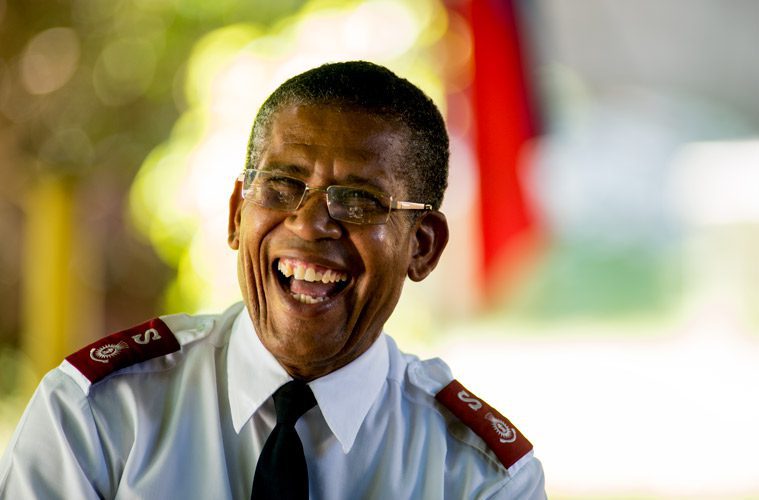
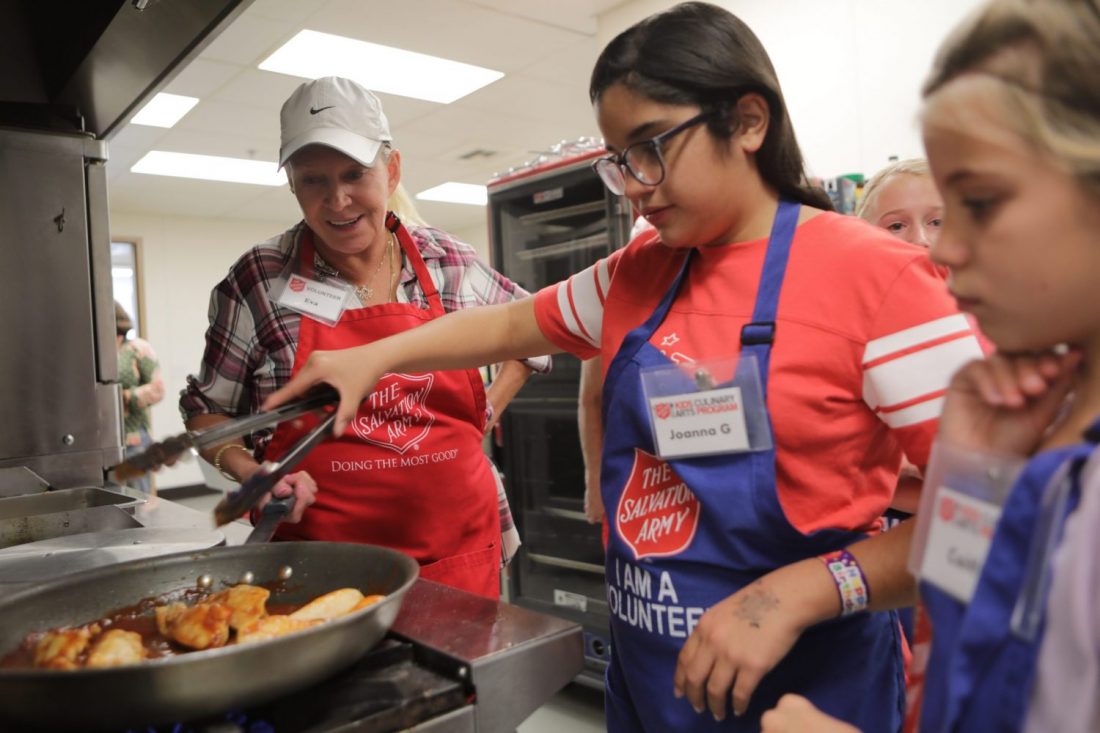
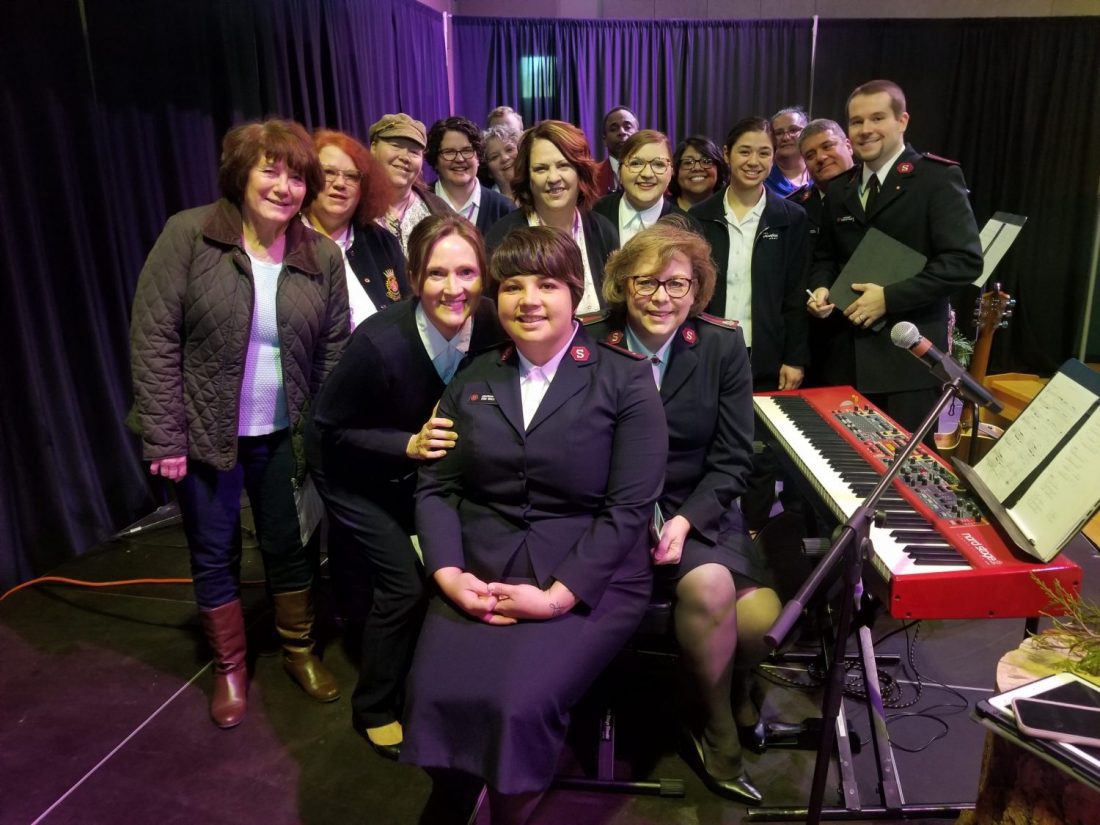

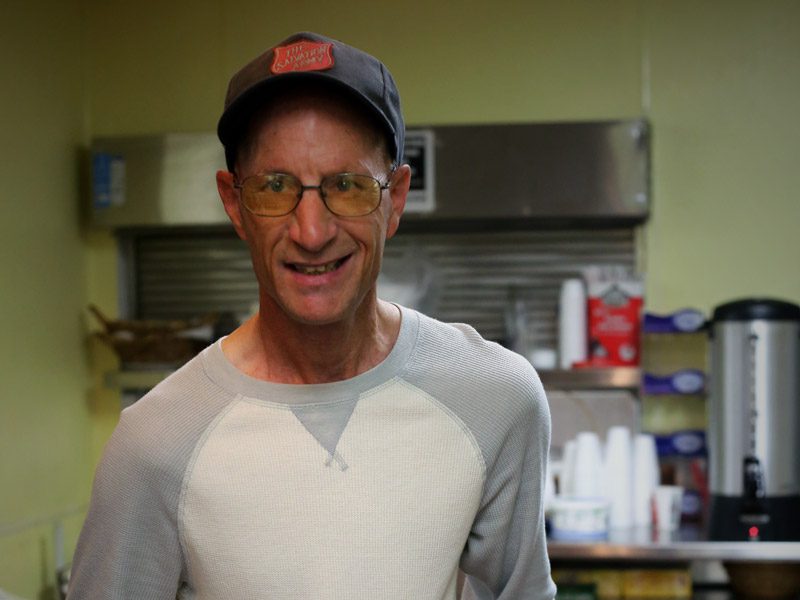
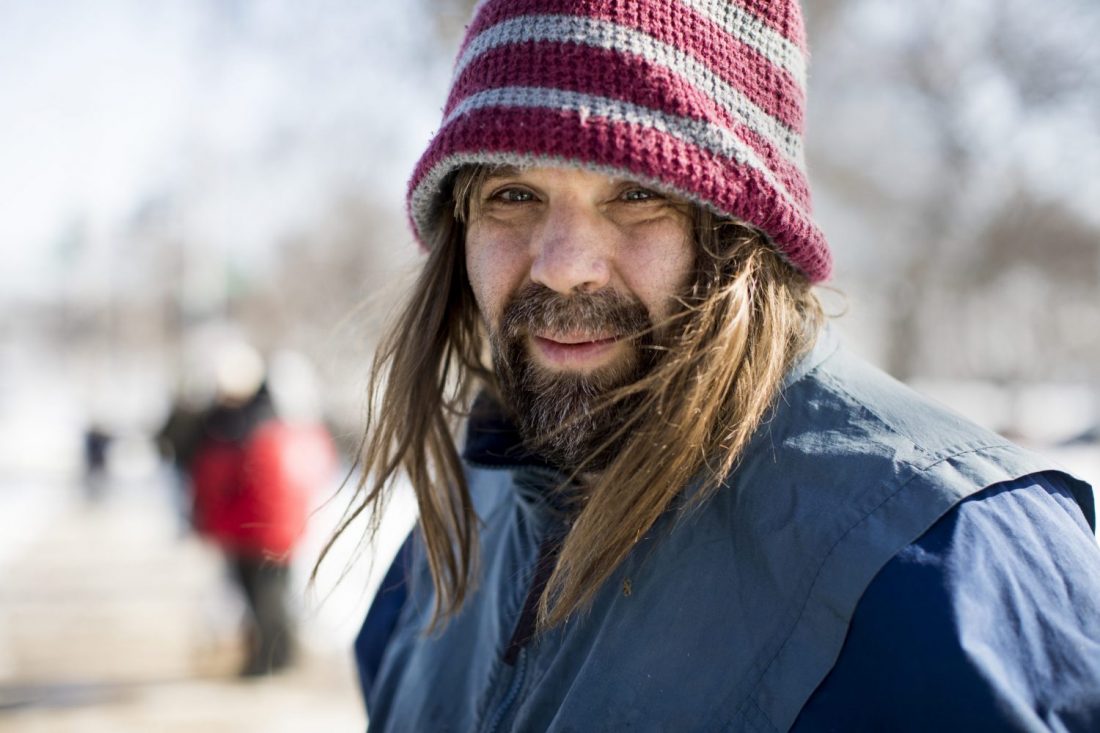
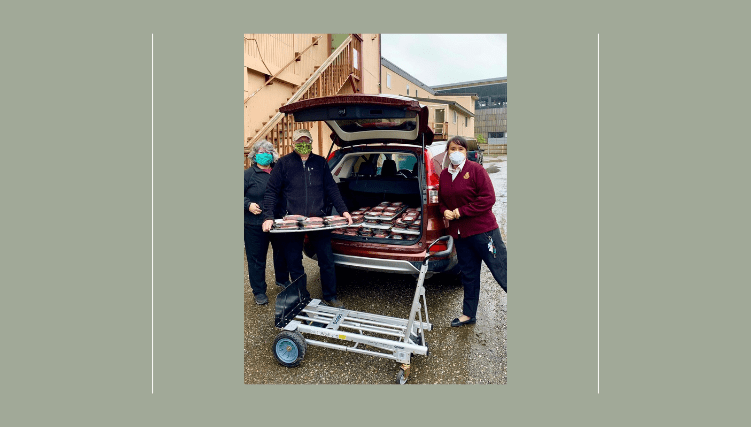
We are there for the hungry! But not just for those who hungry for food, but those that are hungry for a friend, for a shoulder to lean on and an ear to listen. For those that are hungry for friendship and fellowship and for those that are hungry for a meaning of life. For those that are hungry for a hand to hold on to as they face life’s struggles and uncertainty. To often we stop just short of the real need being to often satisfied and patting ourselves on the back for merely meeting the physical need while failing to meet the spiritual needs.
Your article is extremely well-written, very comprehensive and helpful. Probably the best I have seen in my 65 years as a soldier and 22 years as an officer. I would make one addition to your explanation as to how .82 cents of funds raised stays local. I would address the mysterious .18 cents that does not stay locally. Perhaps a brief explanation of how that money is used by our divisional and territorial HQ’s. The term “support services” can be applied to show how the mysterious .18 cents is returned to the local unit in the form of support such as insurance, etc.
Just a thought. Hope this is helpful.
Ed Loomis, Major (R)